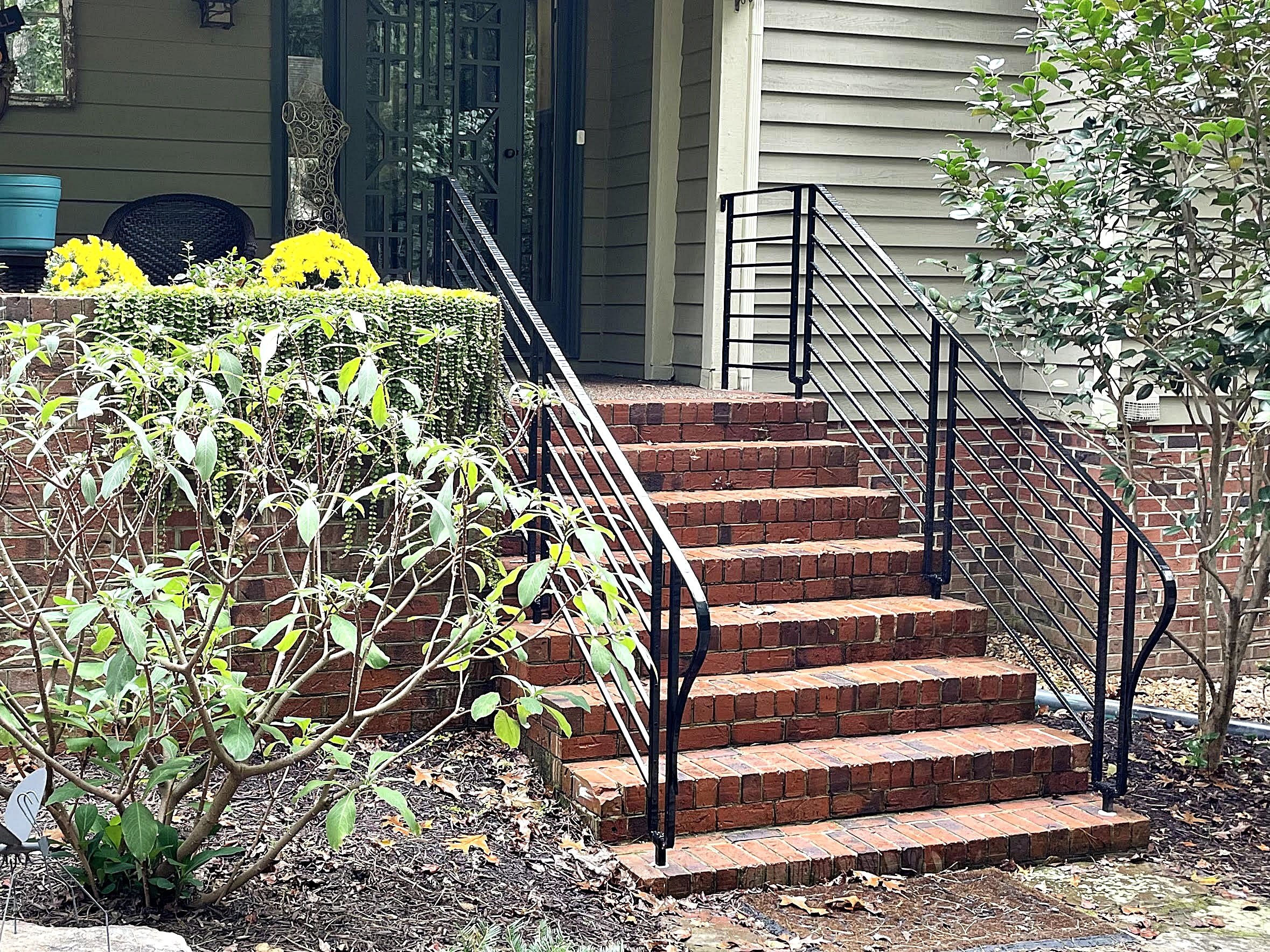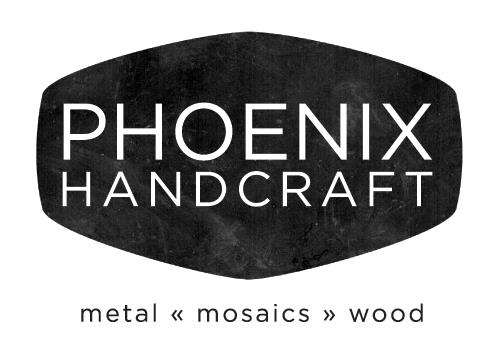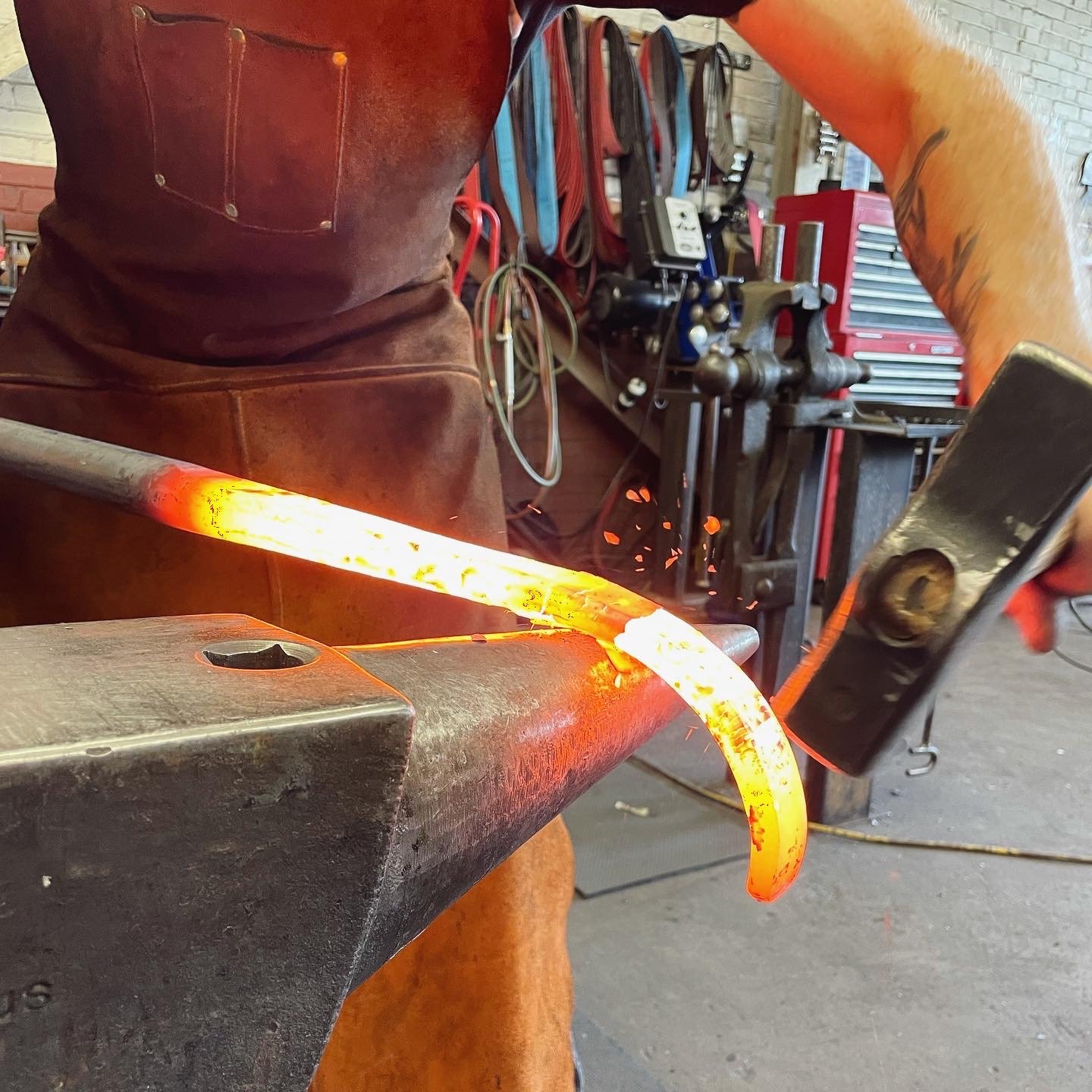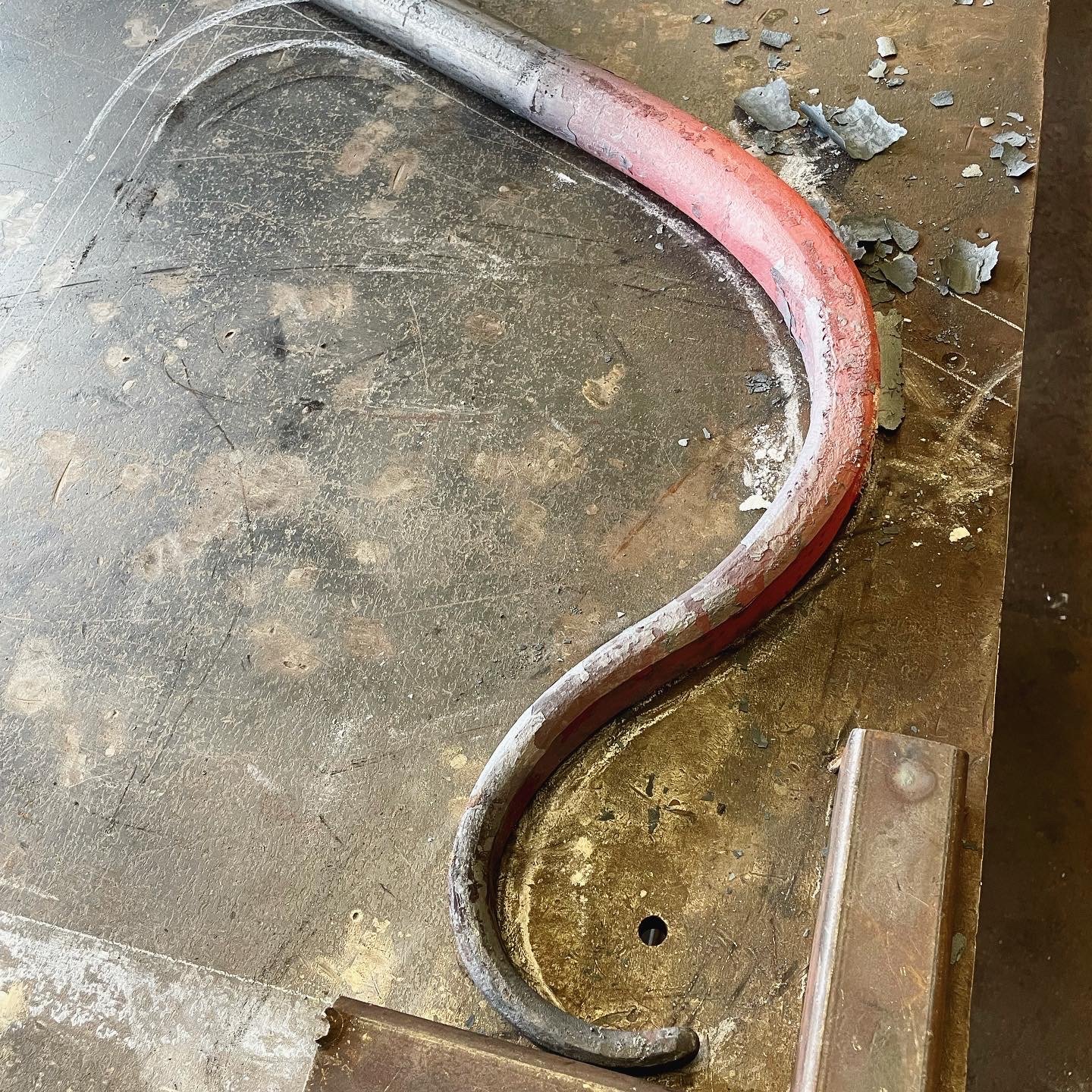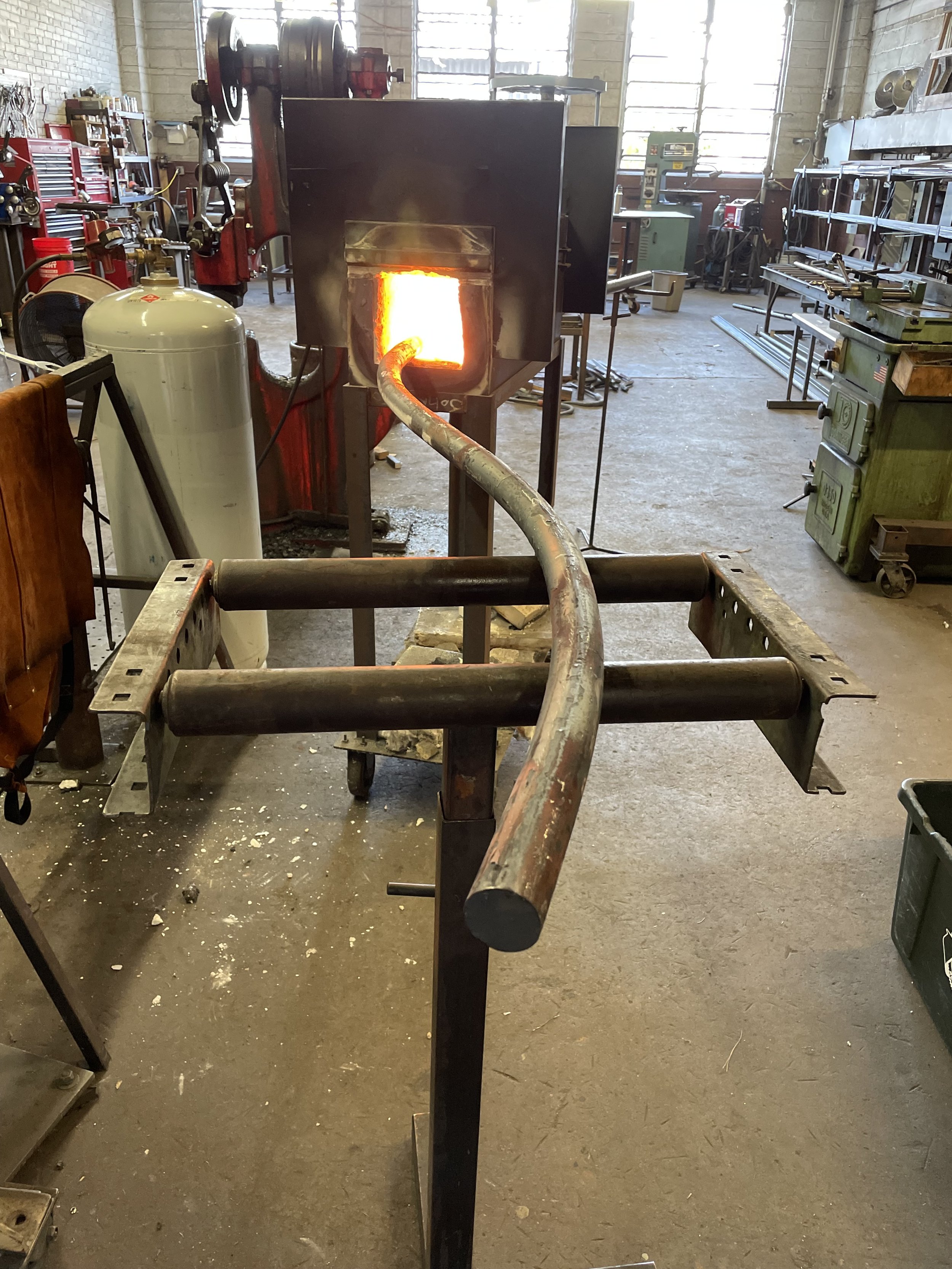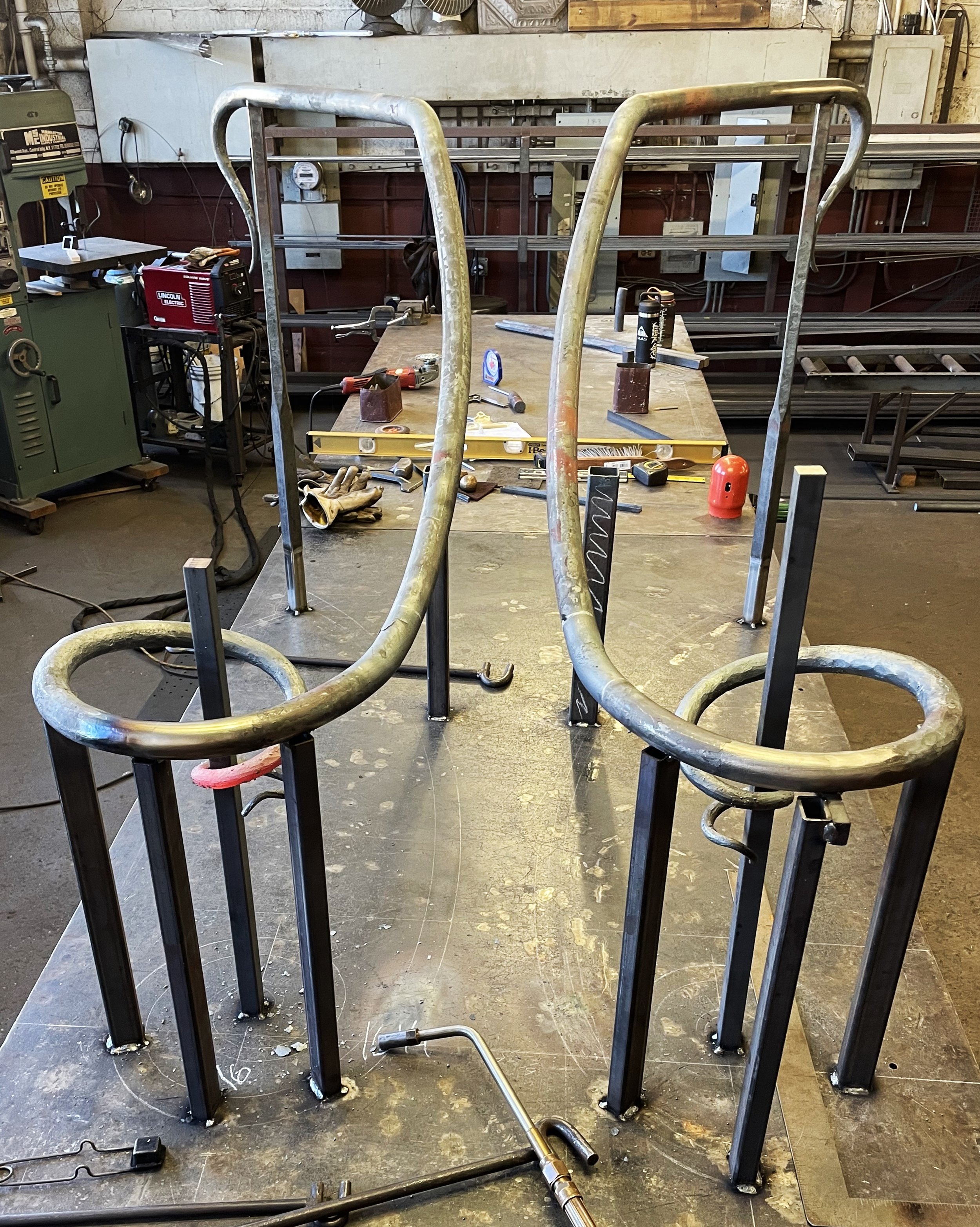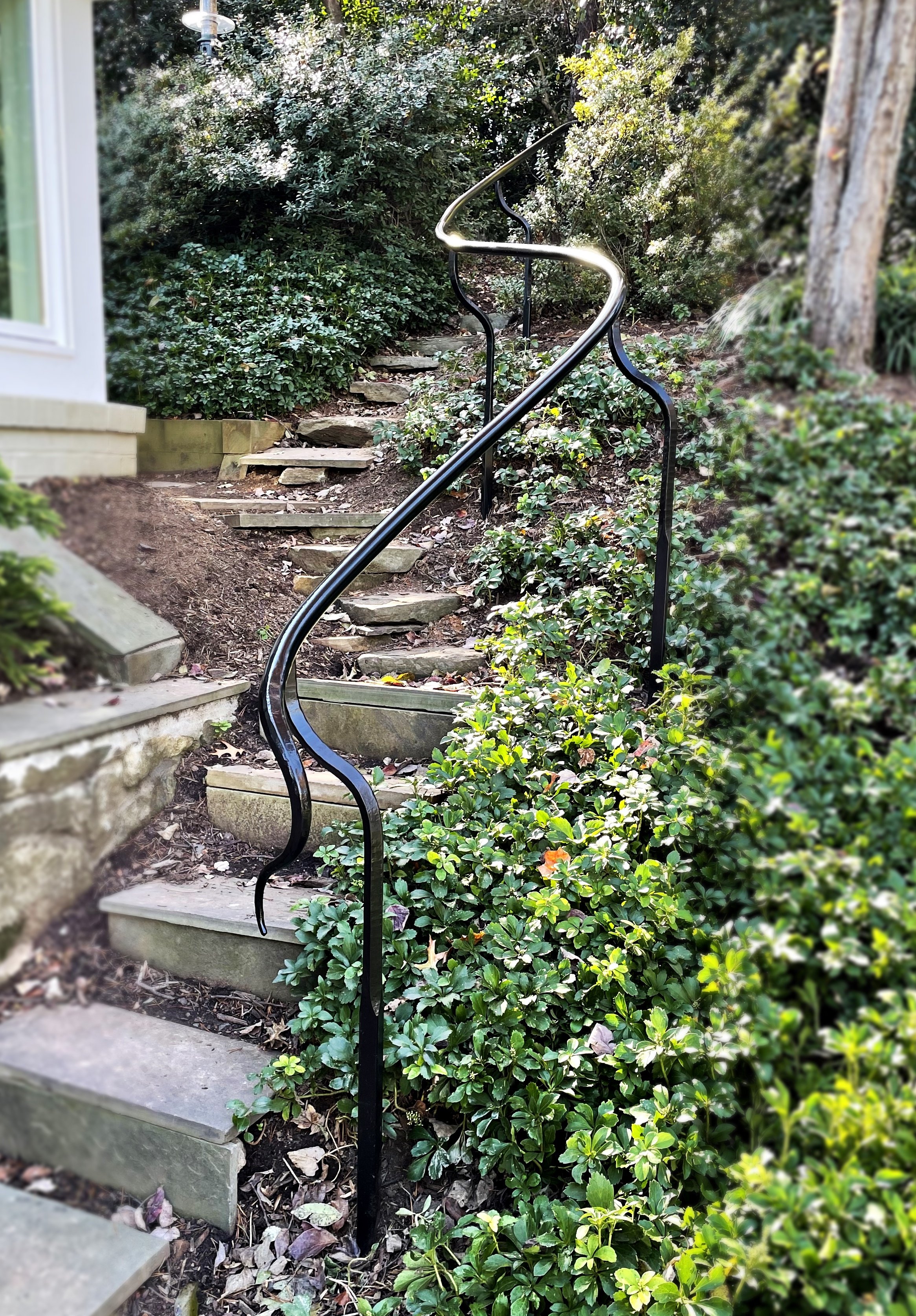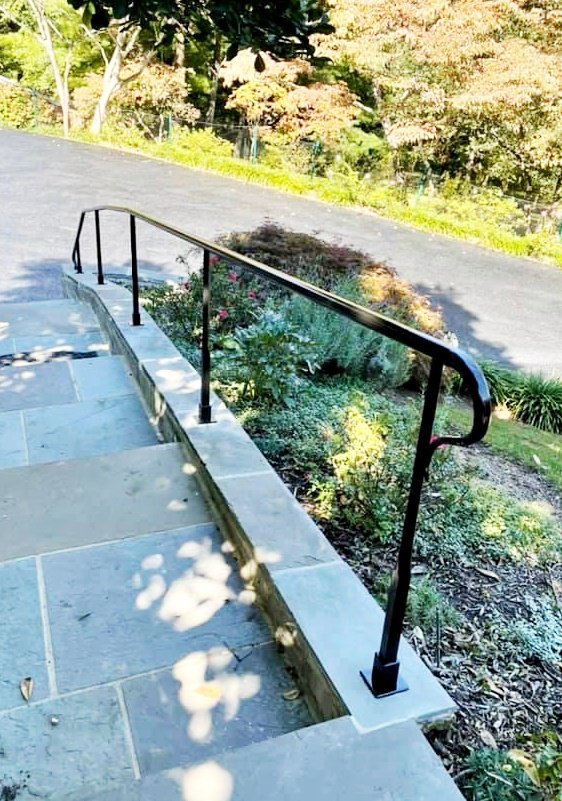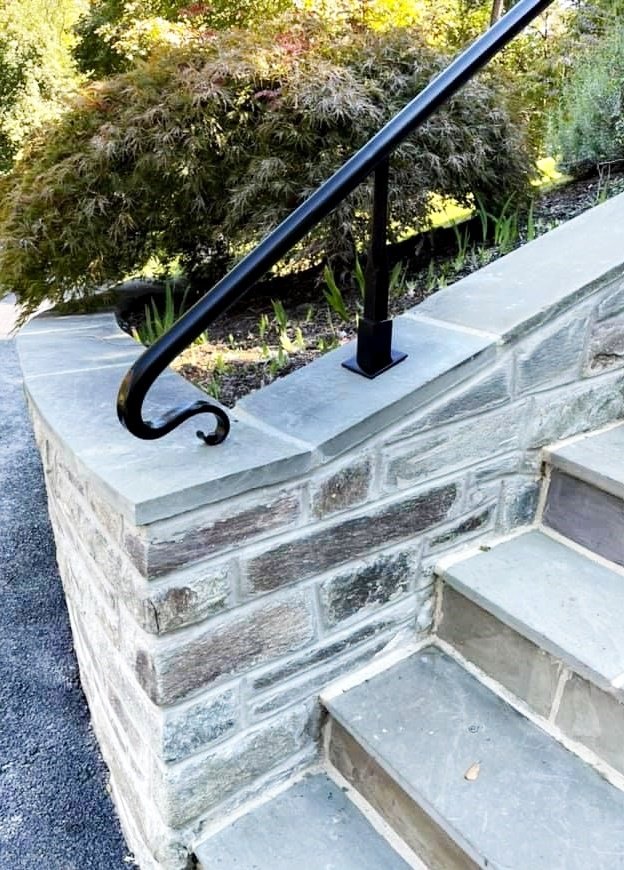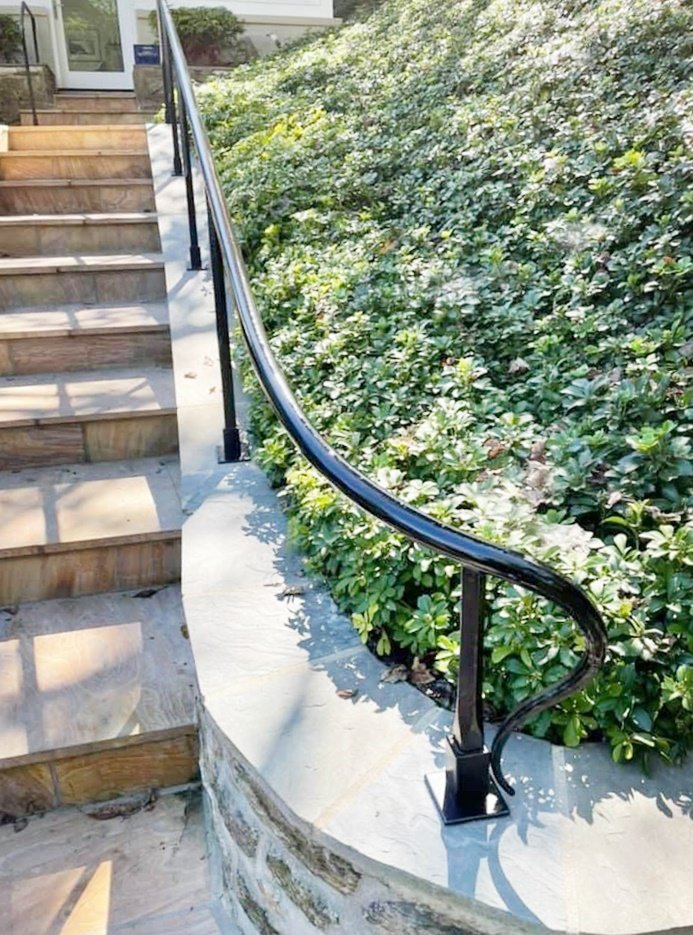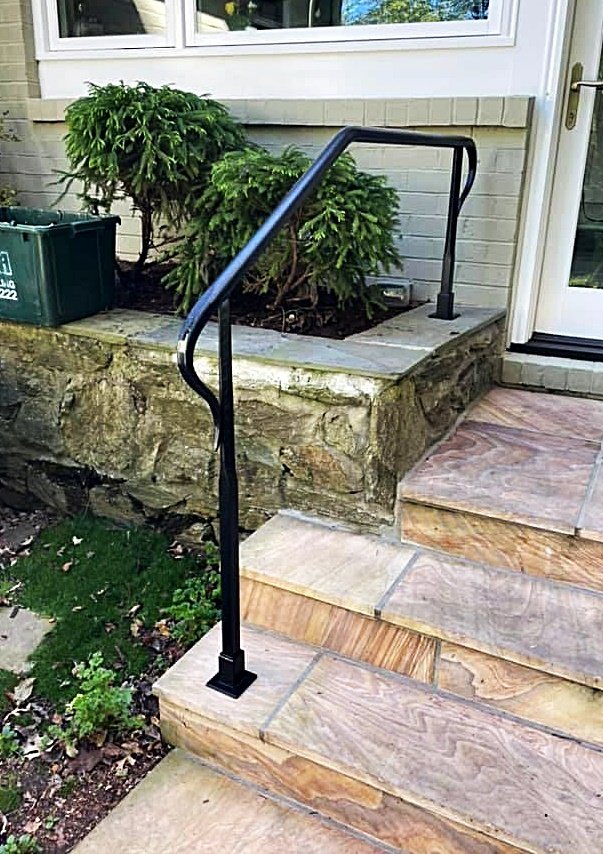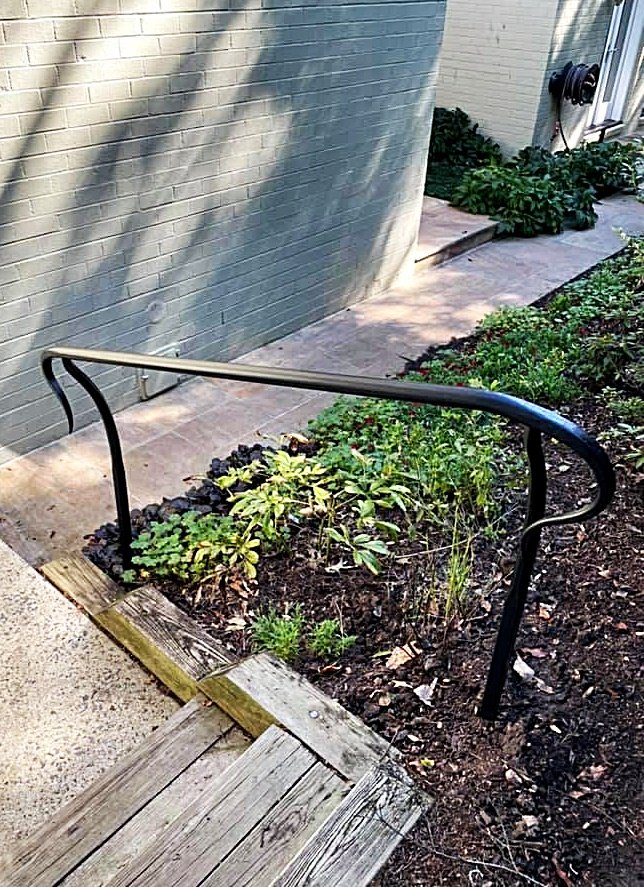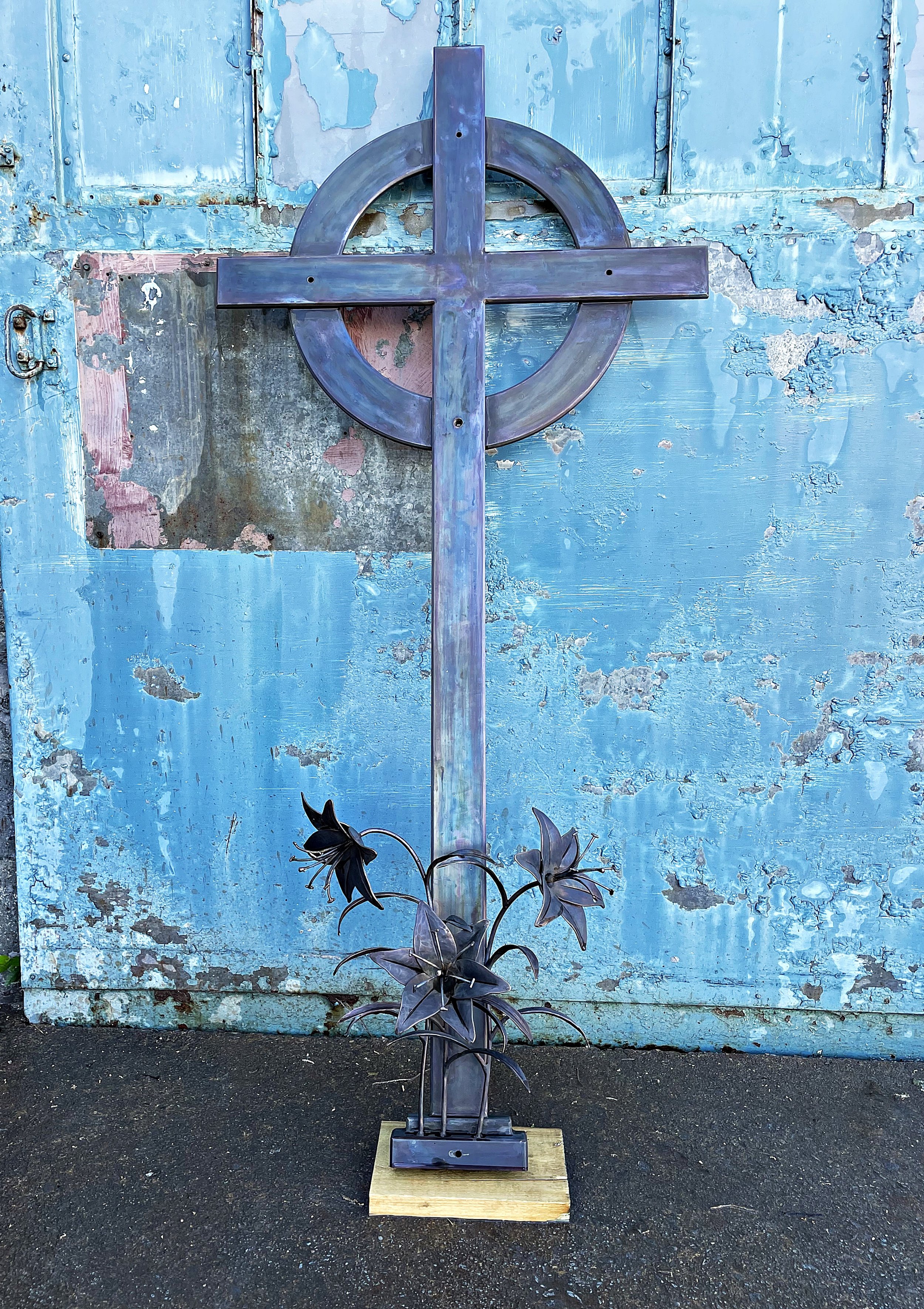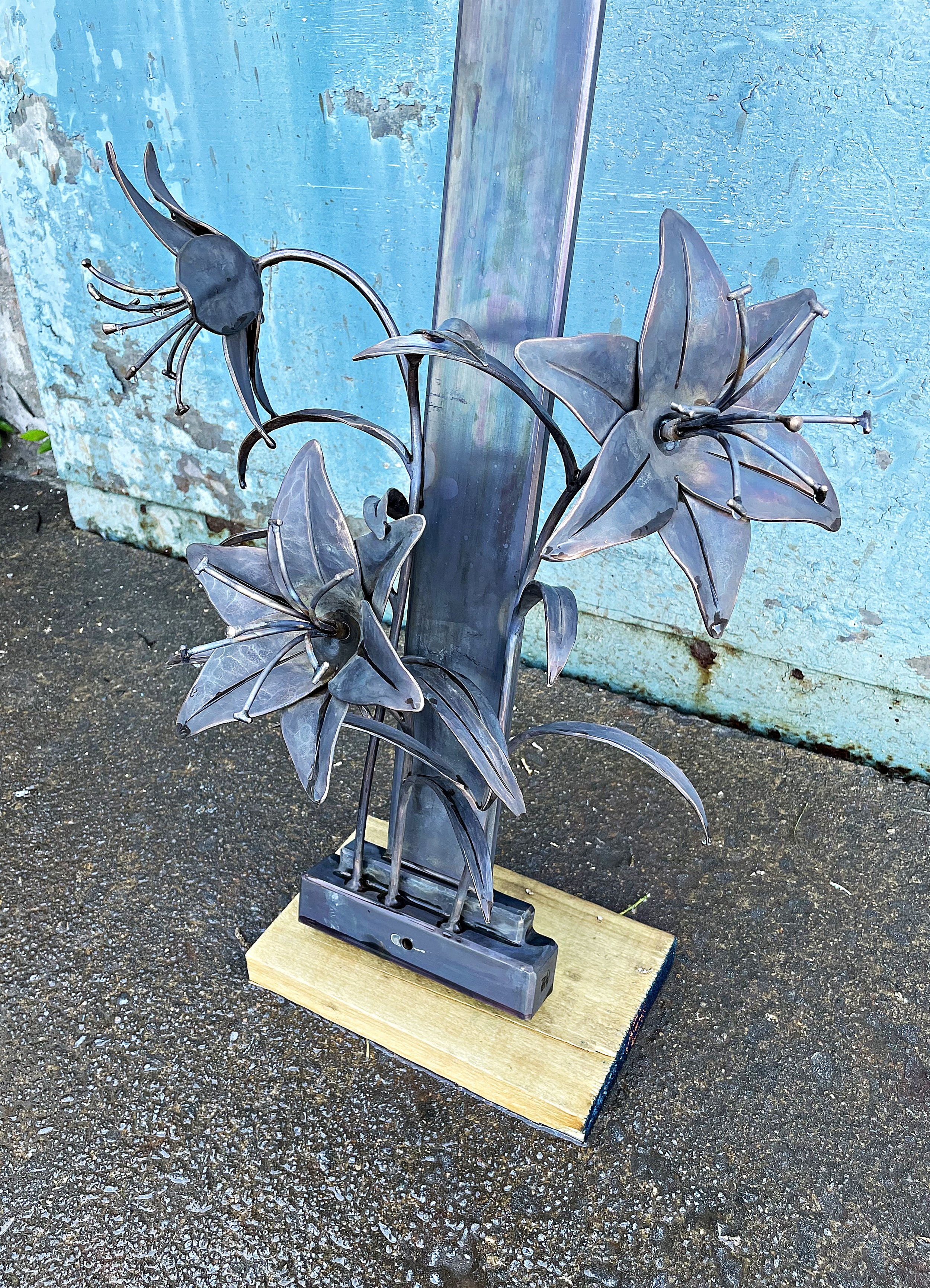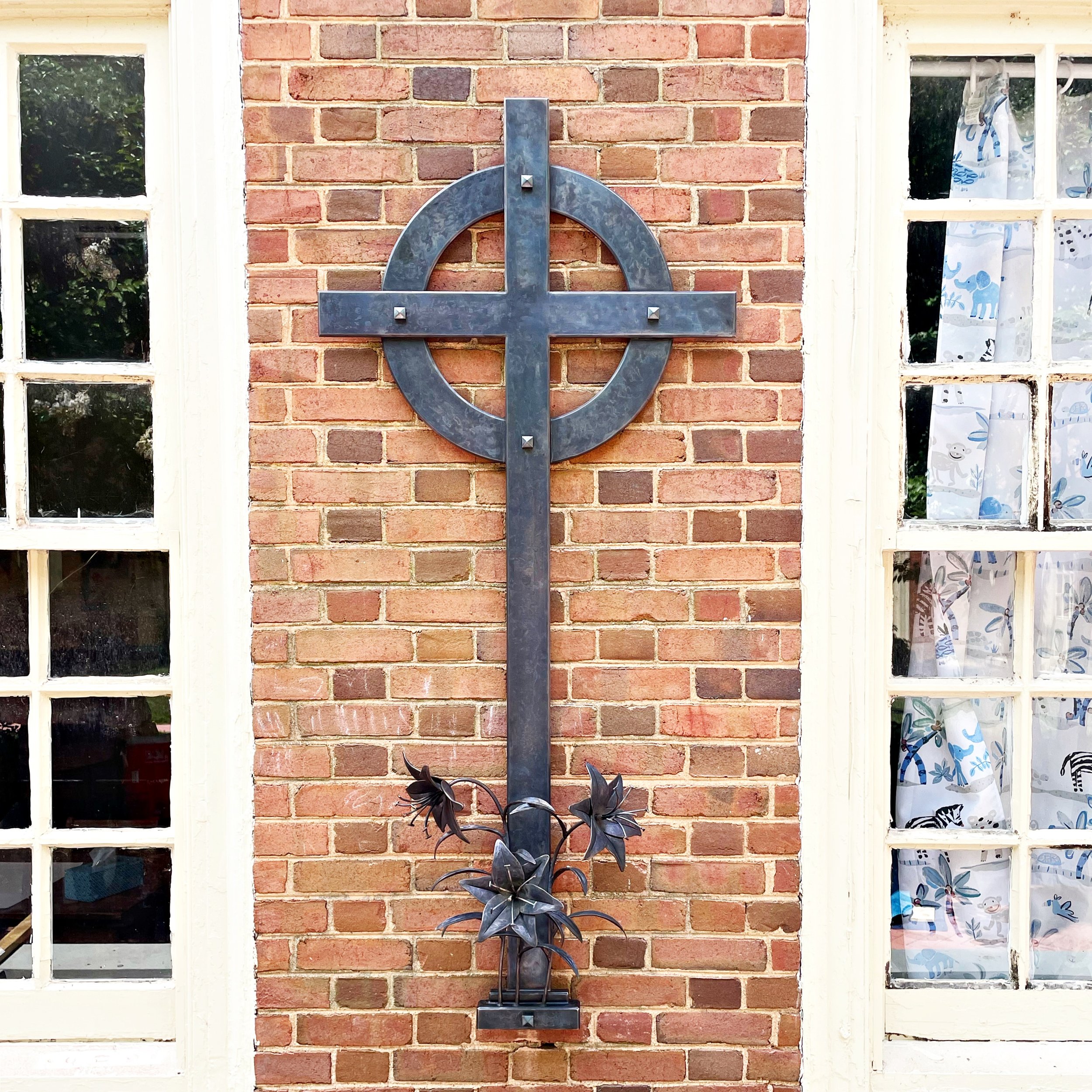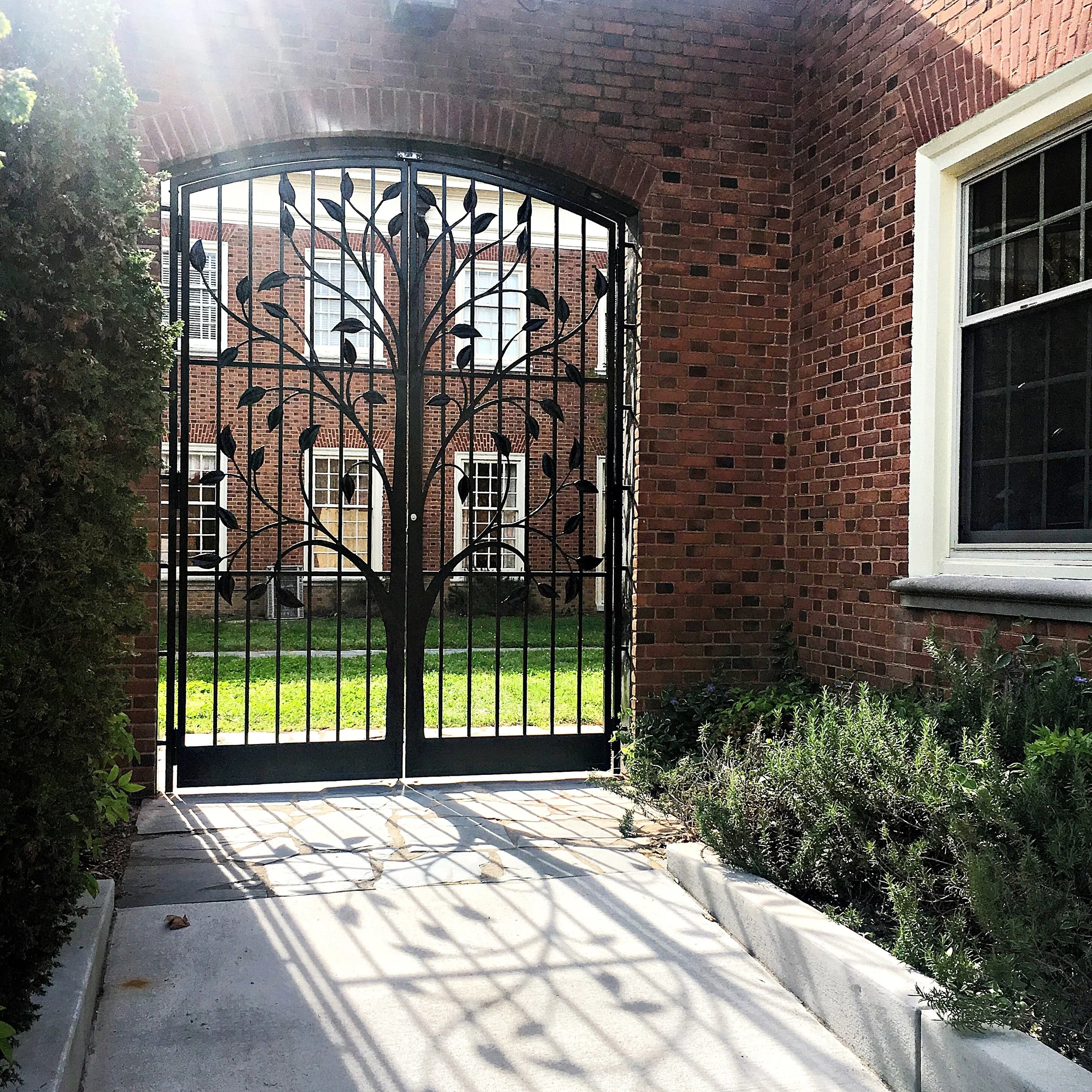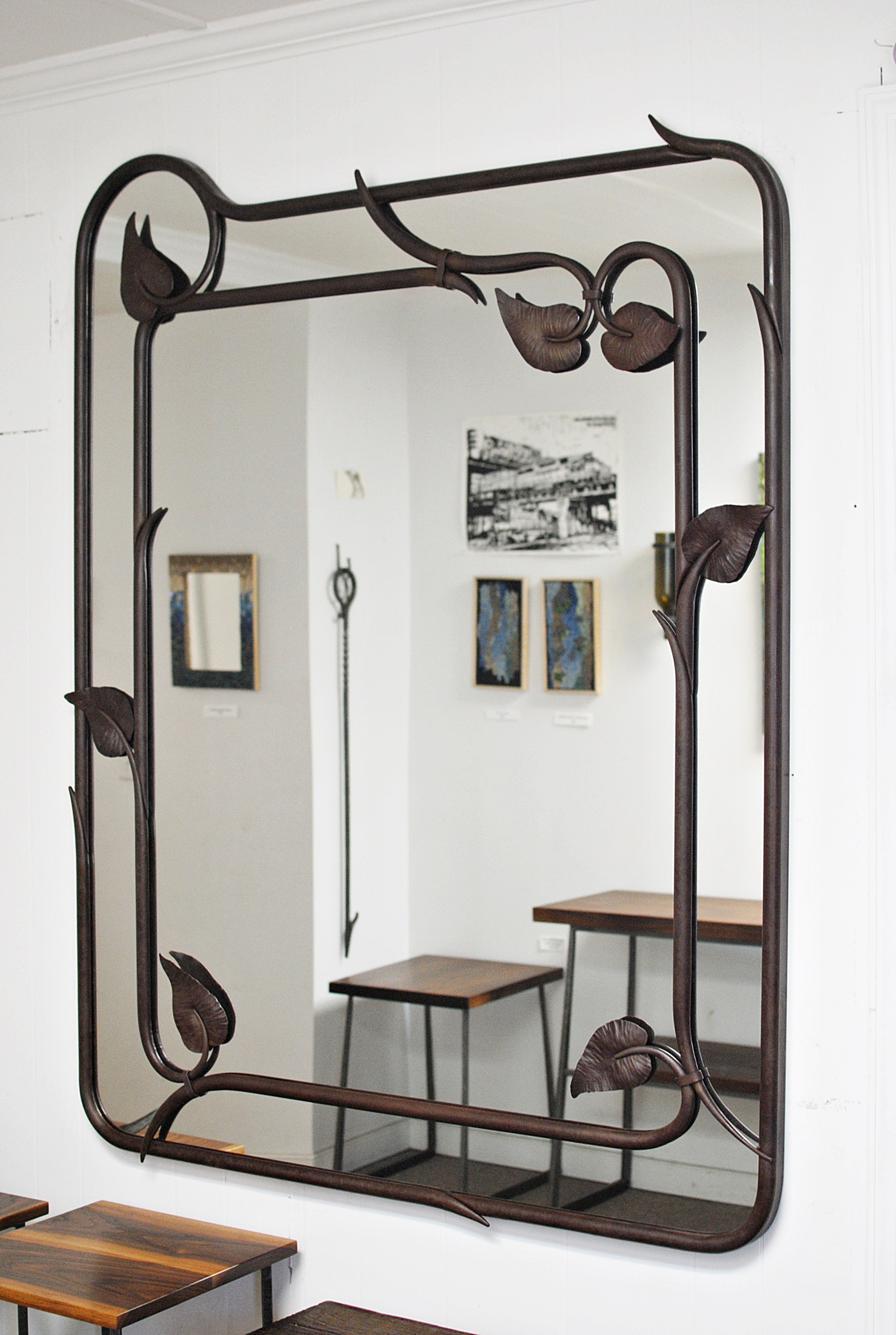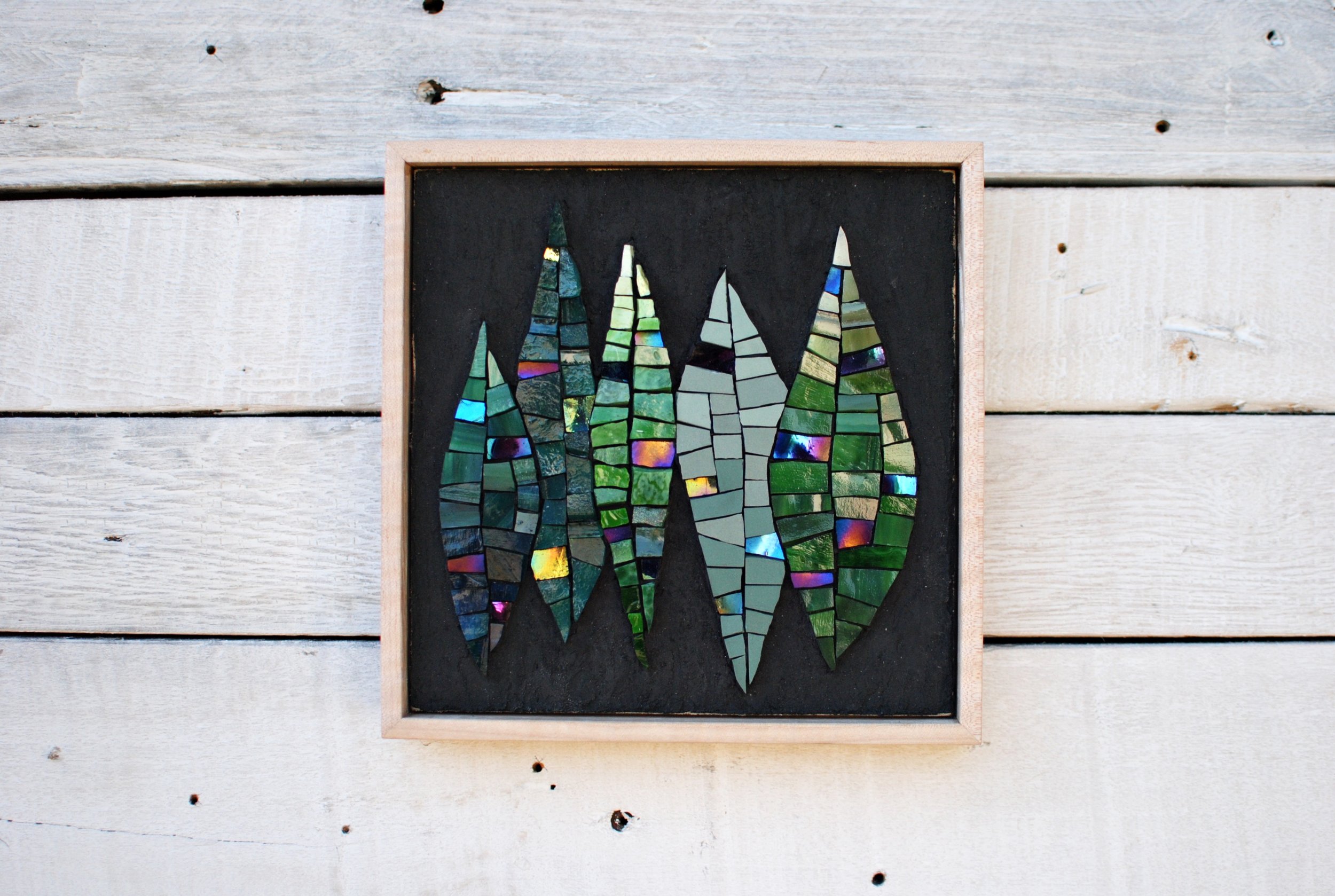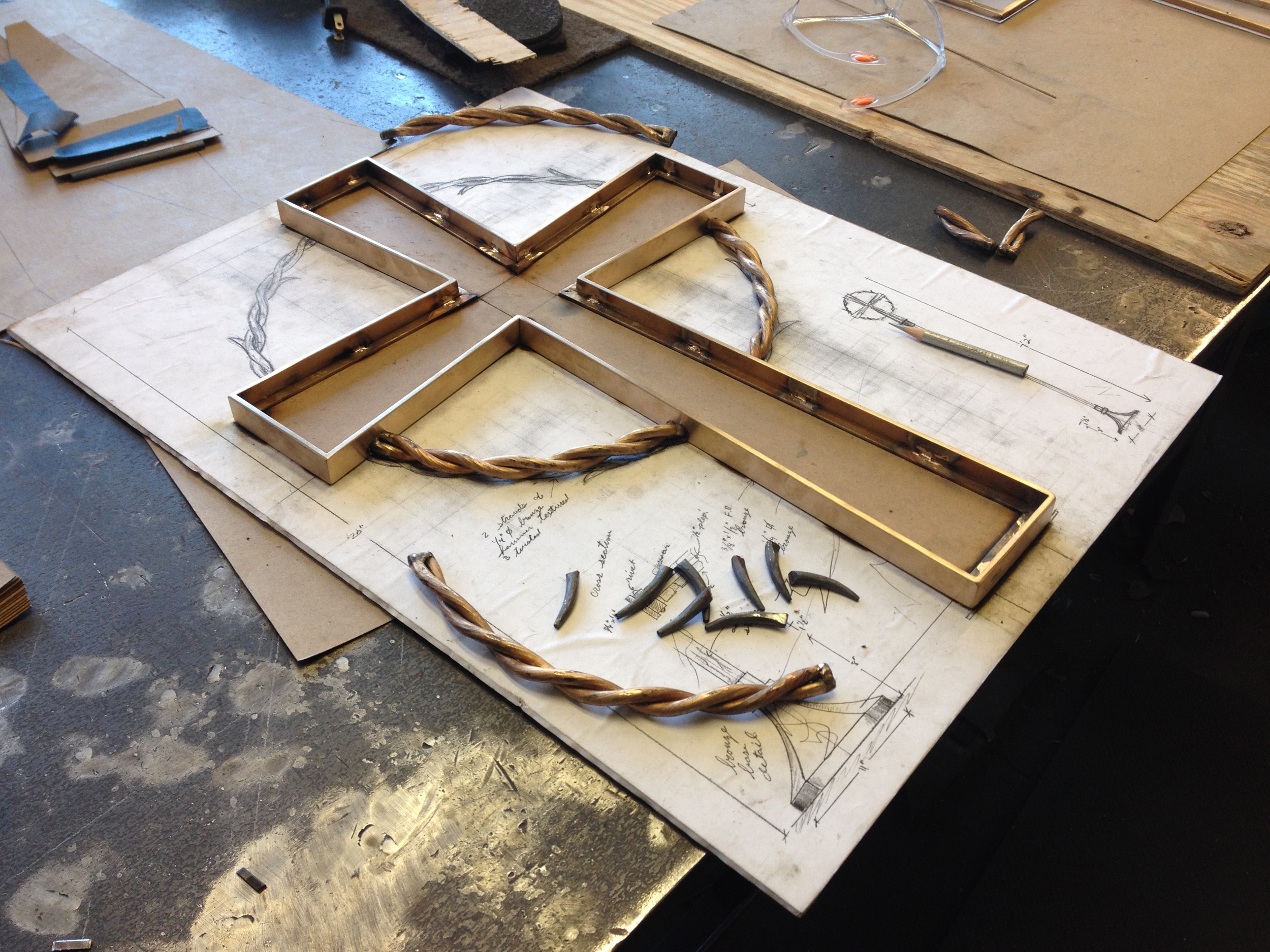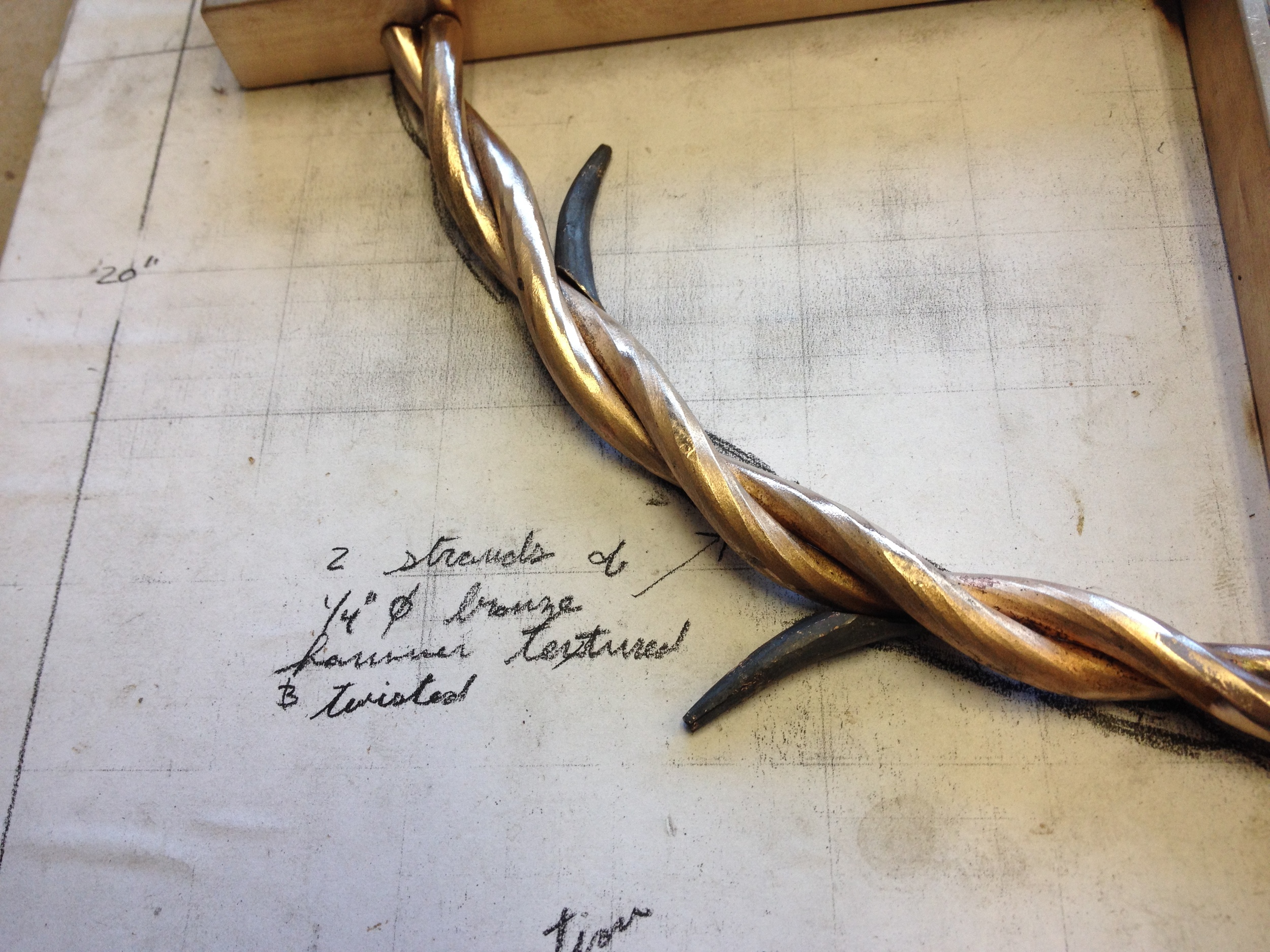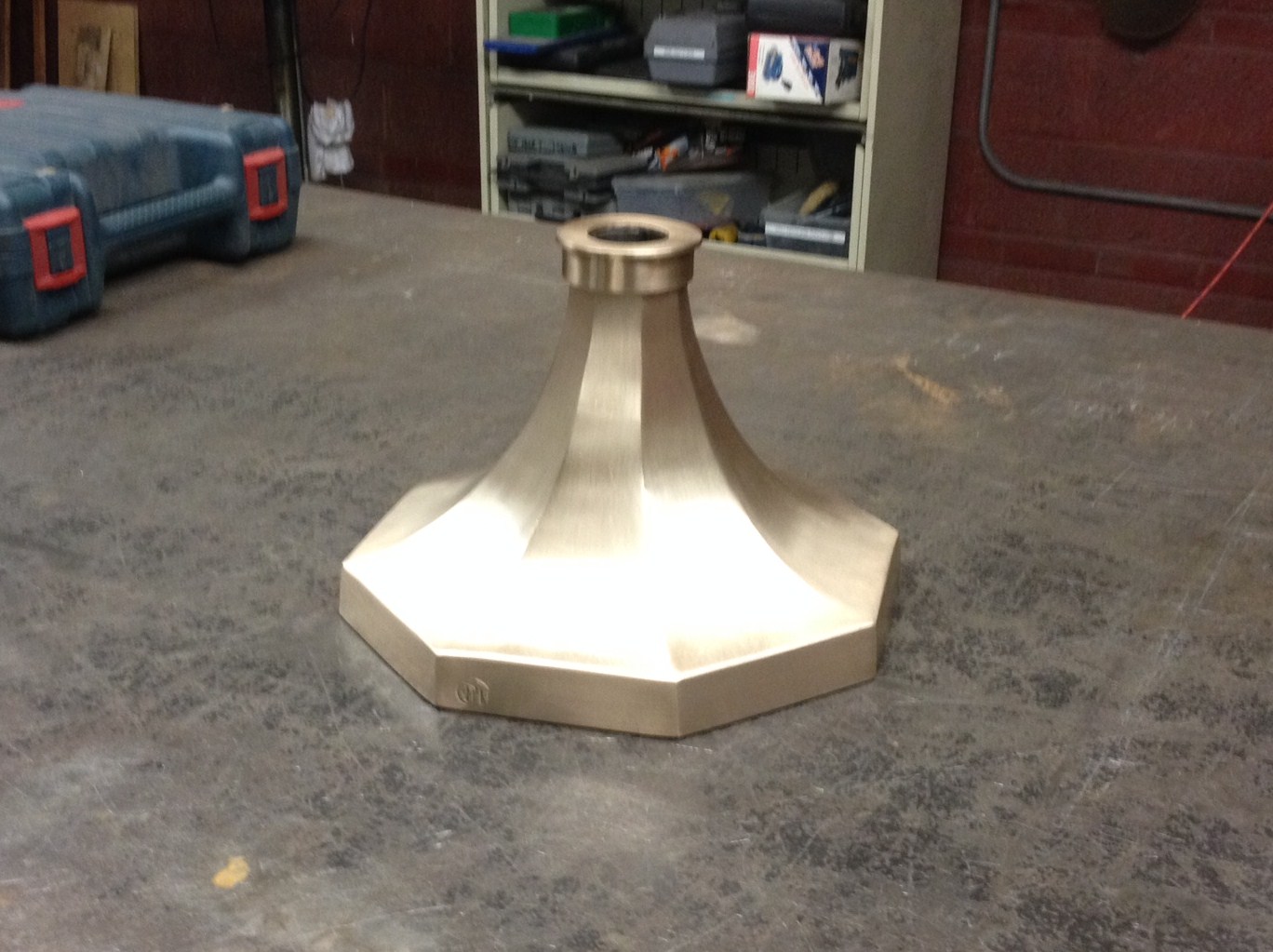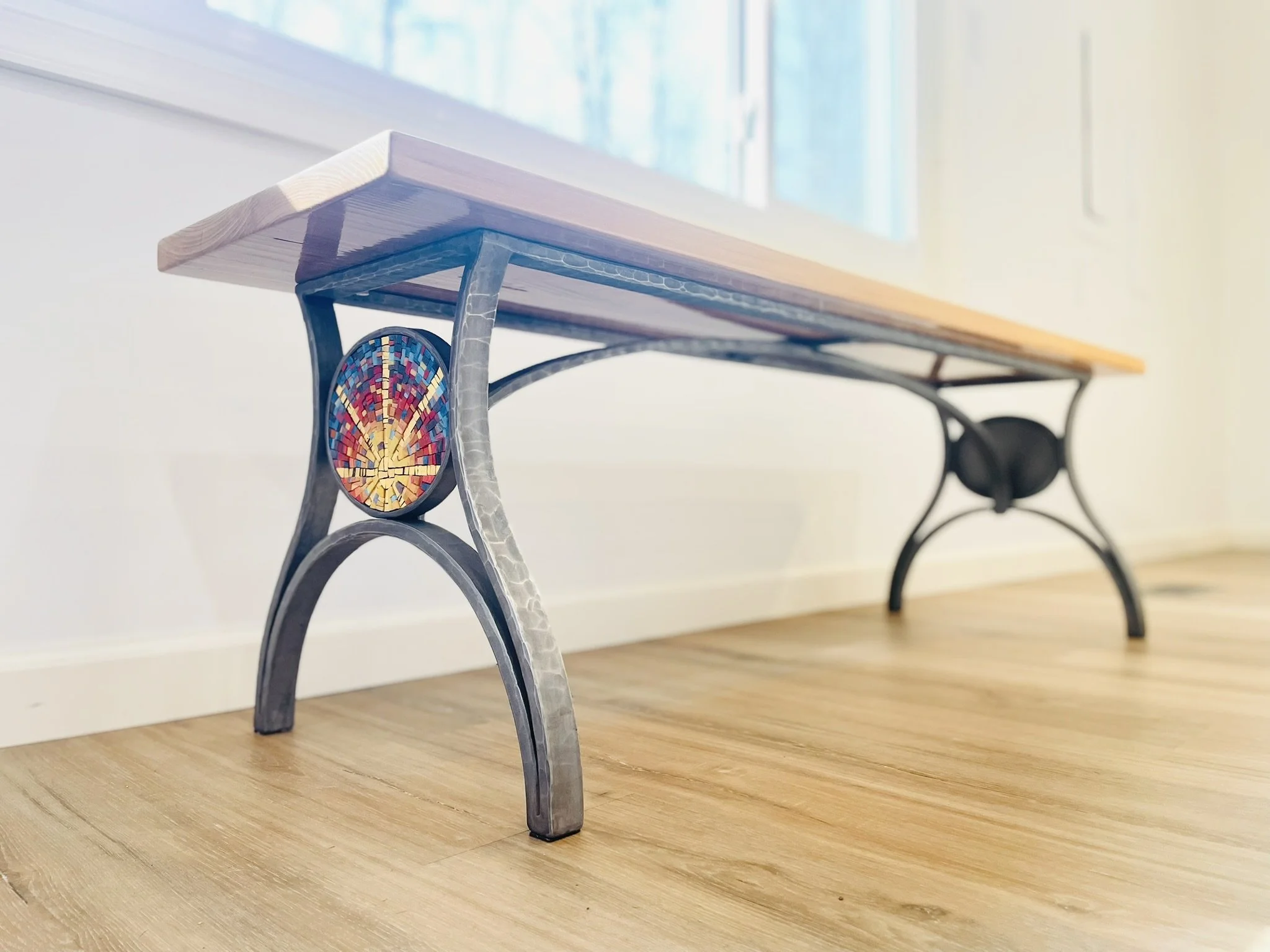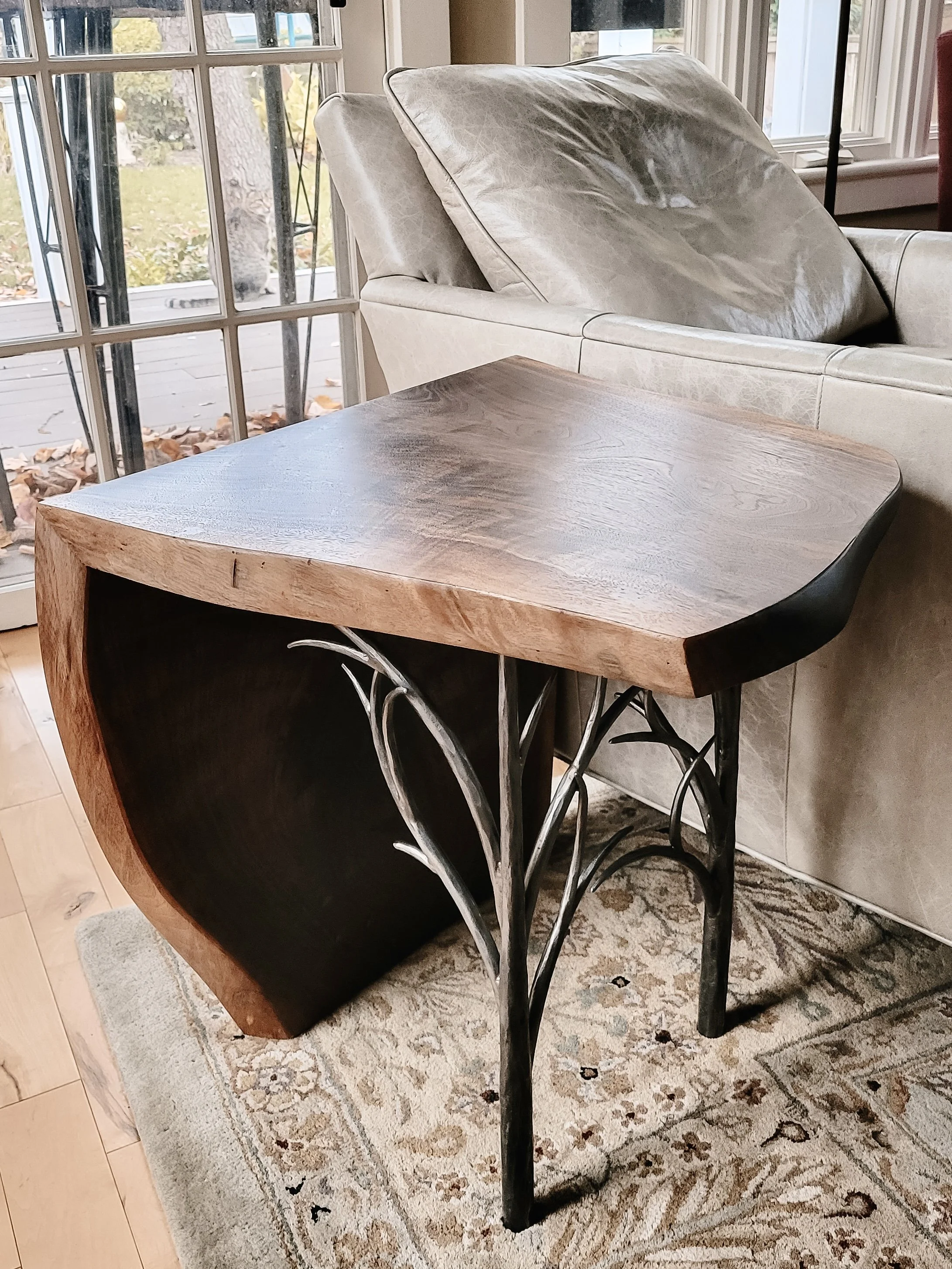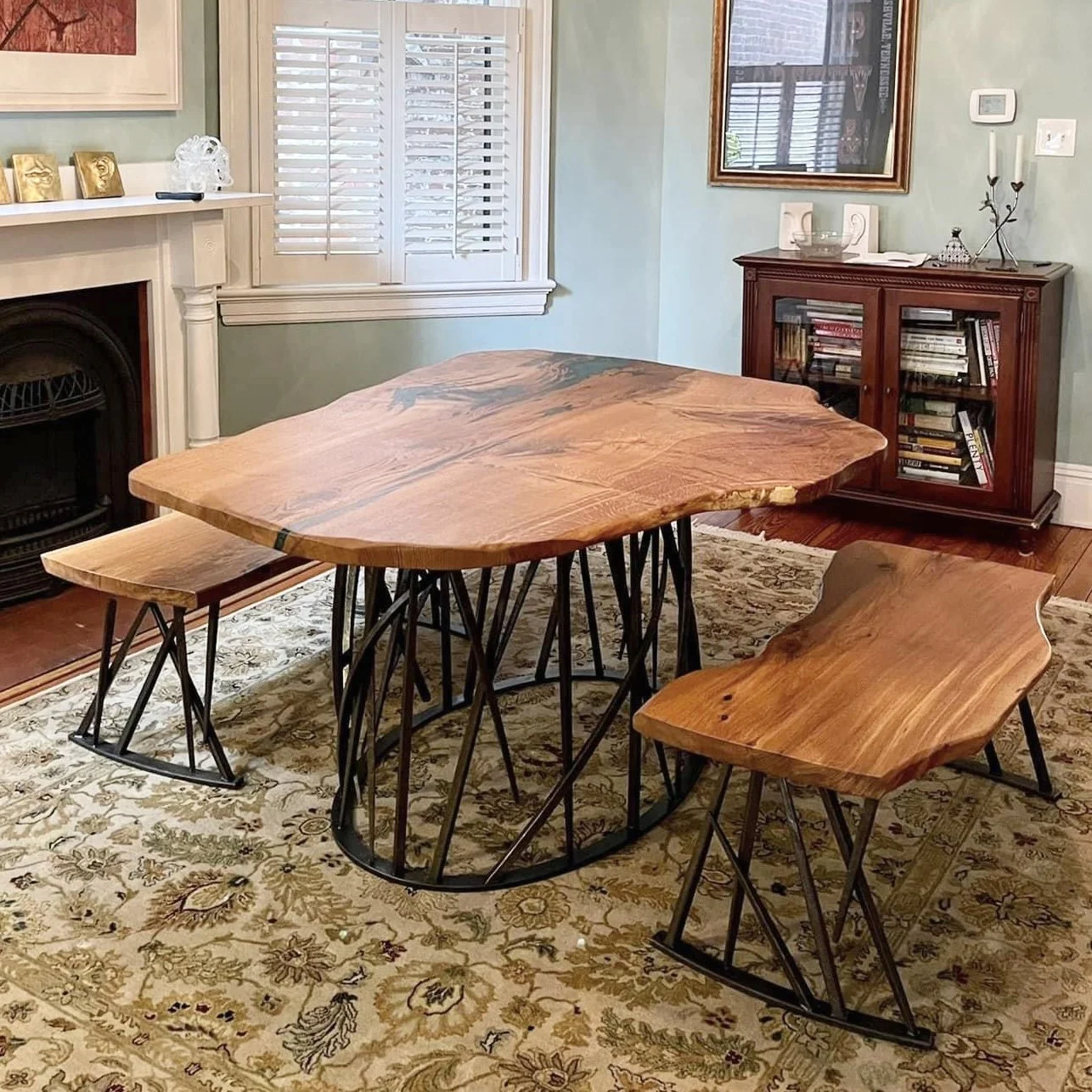Railing with Many Stairs
Kyle designed this series of forged, minimalist hand railings for a home located on a hillside.
The terraced steps and curving lines of the property provided an interesting challenge. Each railing required custom measurements and templating to fit the various spaces.
The result is a series of railings ranging from winding, organic lines to more traditional forms, tied together with a cohesive style.
We made this video to share on social media while Kyle and his team were forging some of the railing components. We were in the midst of a heat wave here in Virginia, so the Bananarama song “Cruel Summer” seemed a particularly fitting soundtrack.
Forging custom railing.
For the entrance to the home, Kyle designed a relatively spare set of hand railings in the same style. He added a spiral flourish to the end plus a hand-forged bronze finial to give this set of railings a bit of presence.
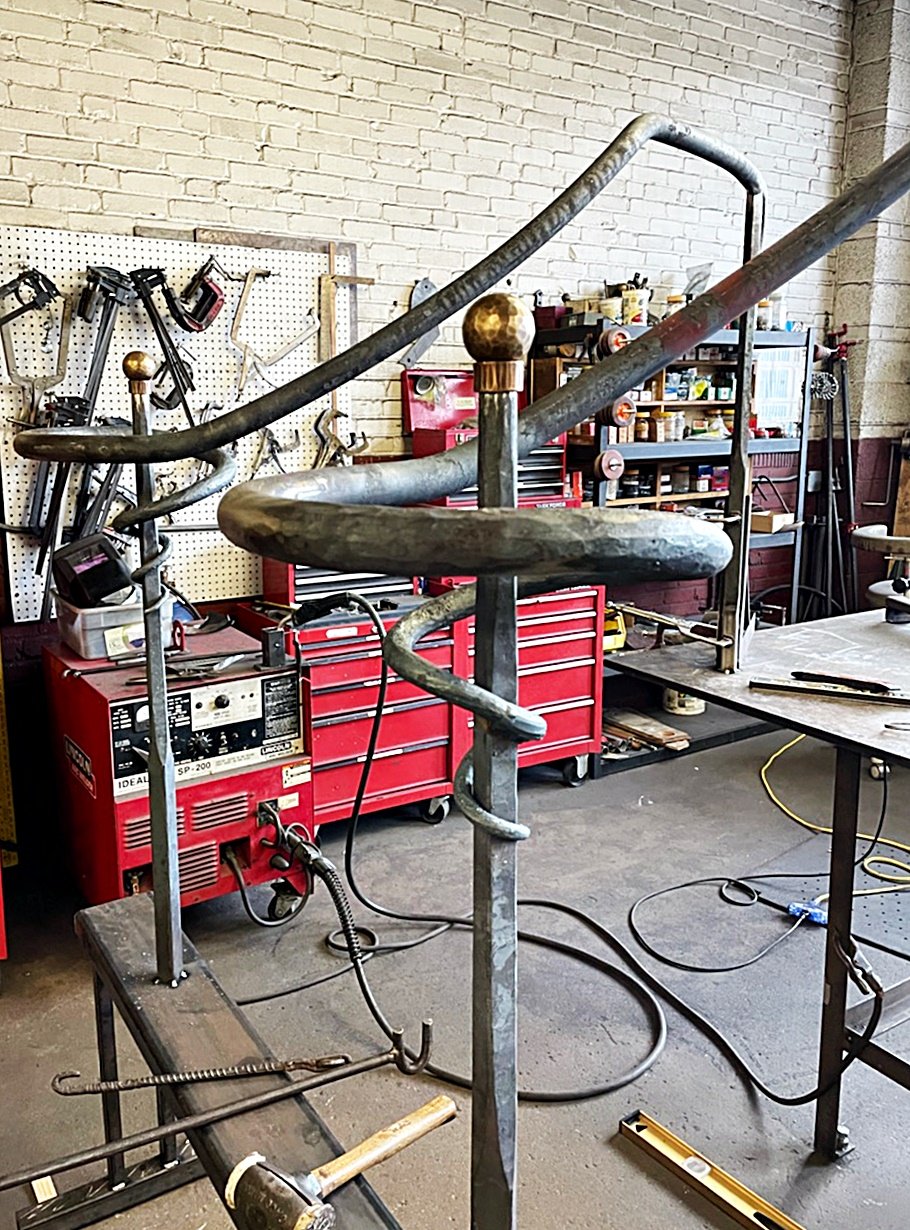

Here’s a sample of the range of railings Kyle and his team created for this lovely property.
Ready to start designing your own custom railing? We are currently booking for this coming fall. Reach out and let’s chat!
